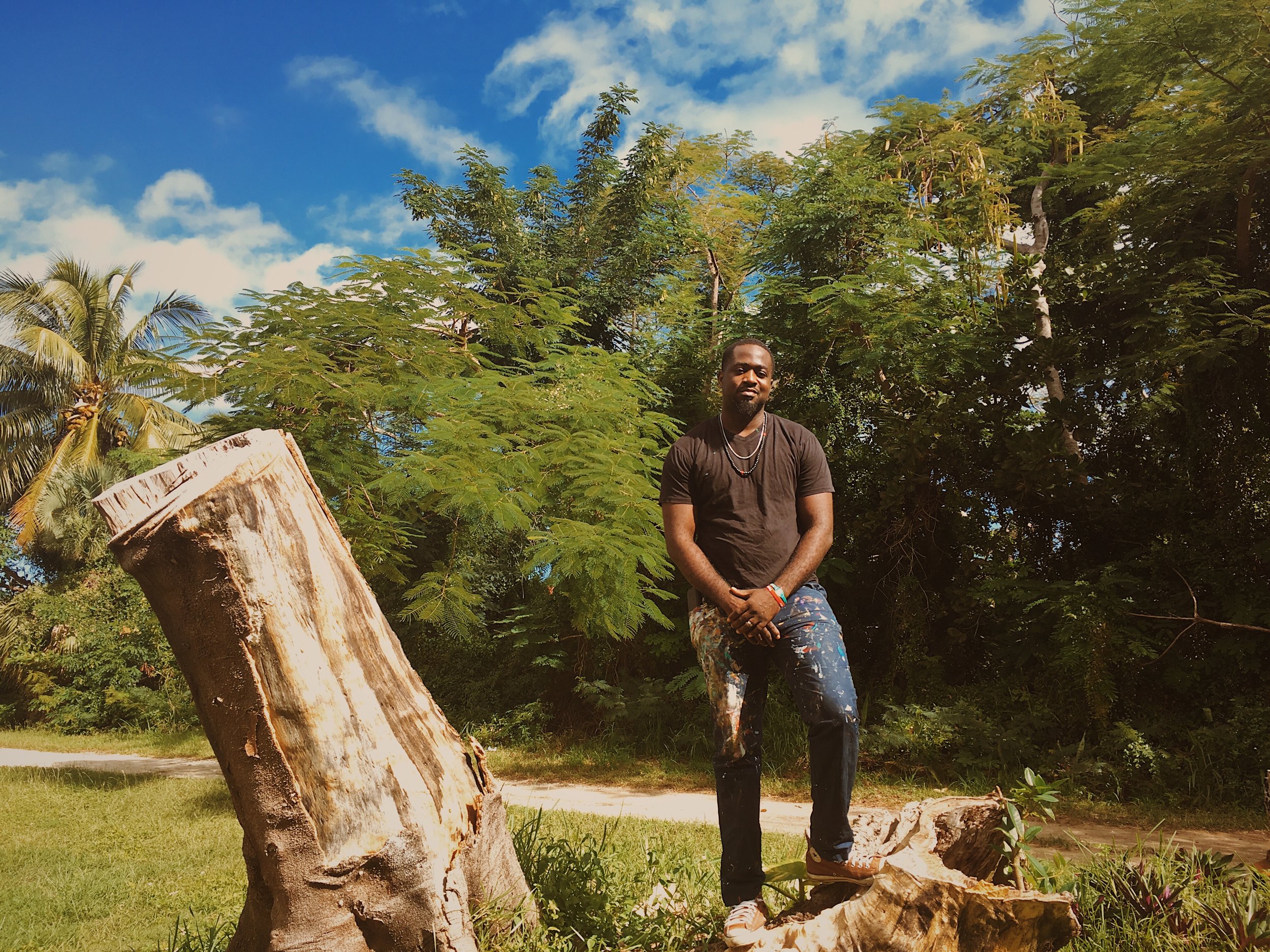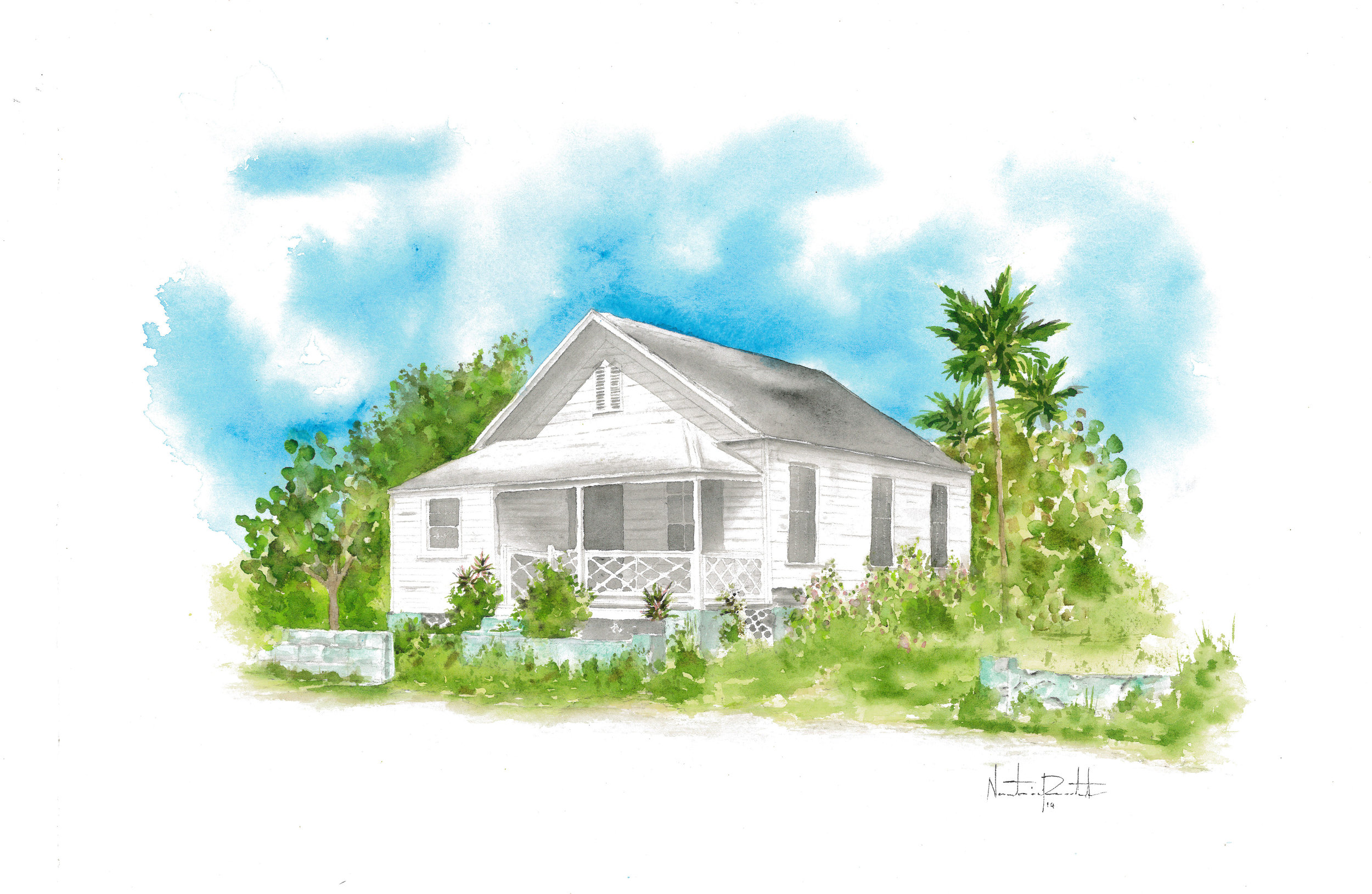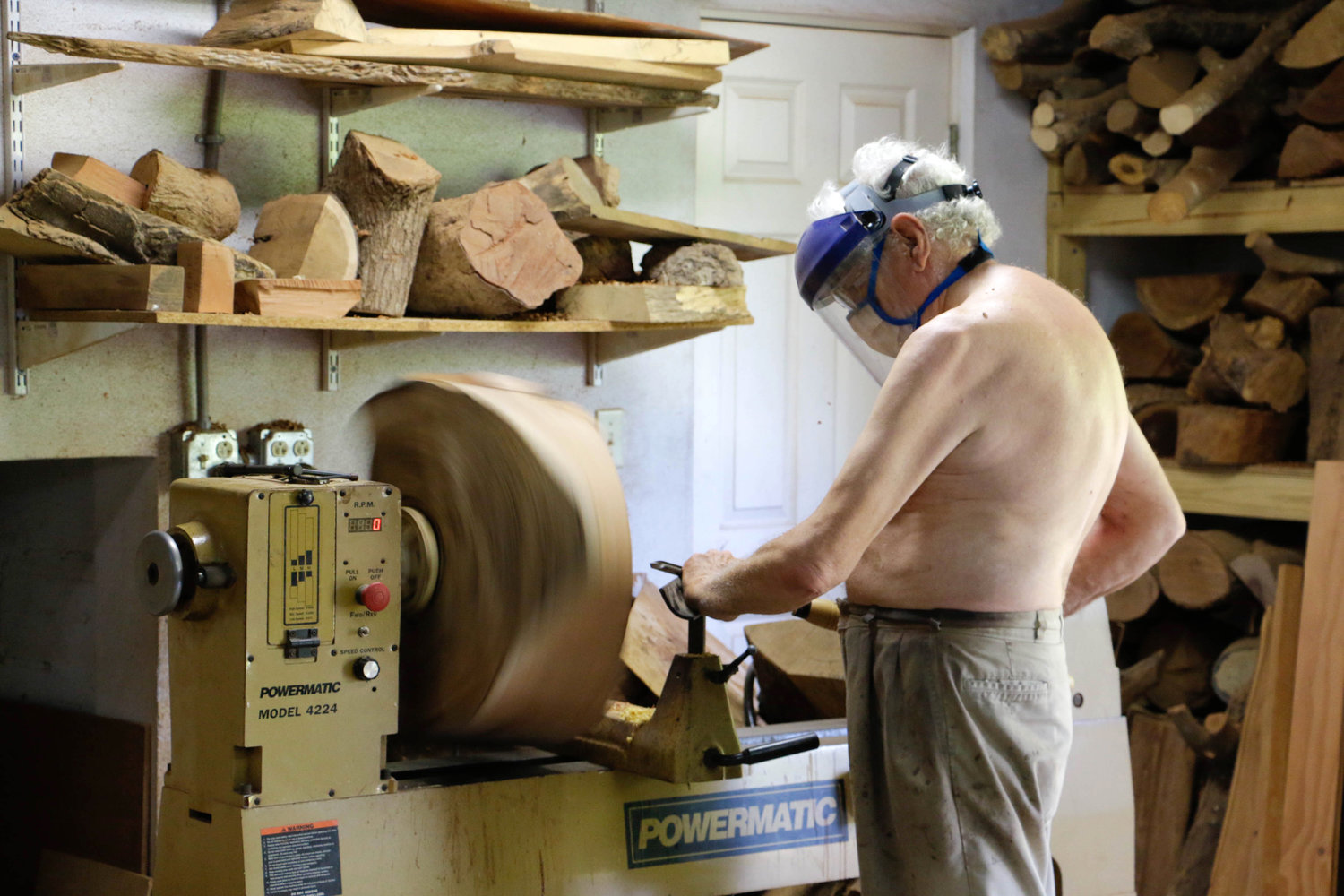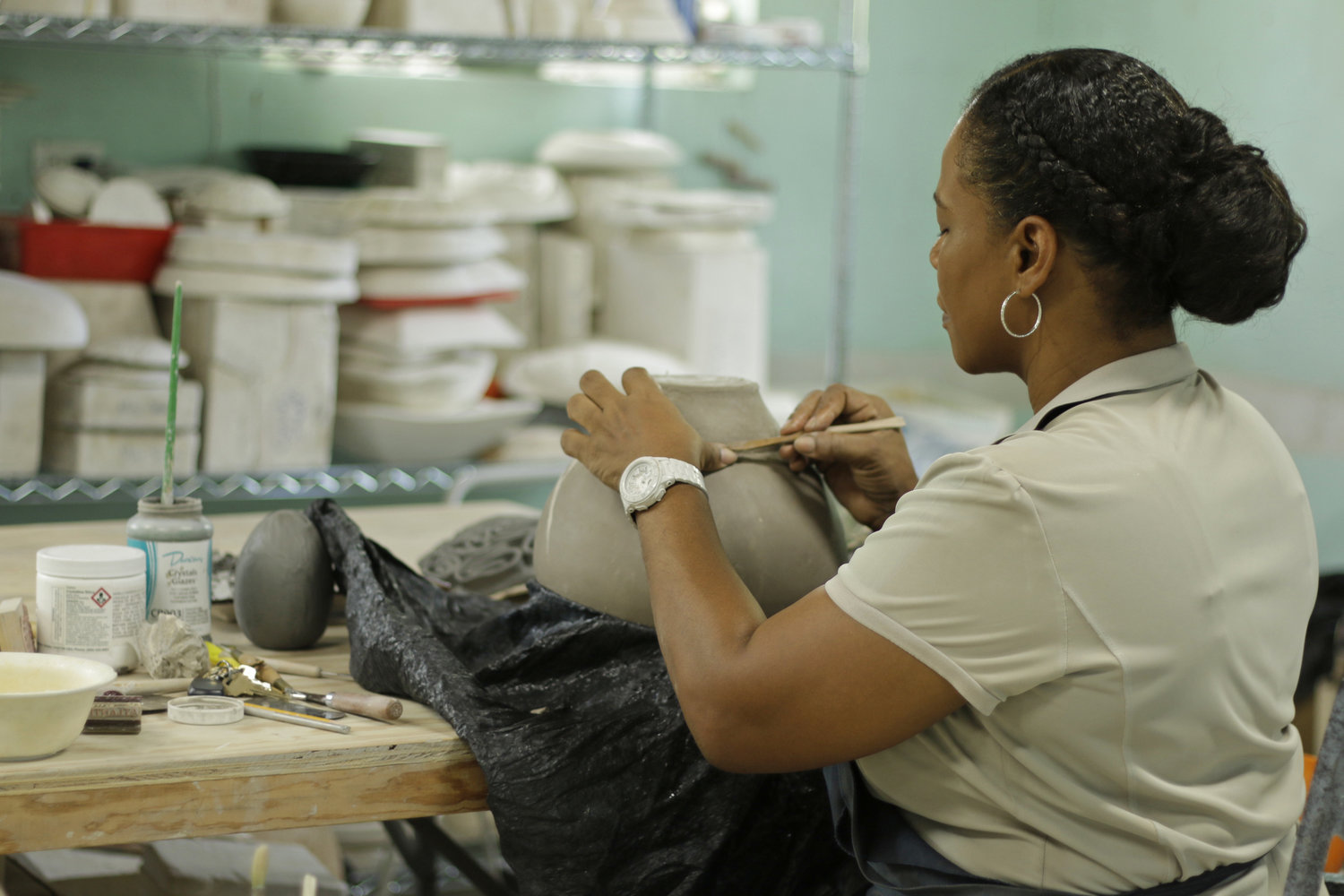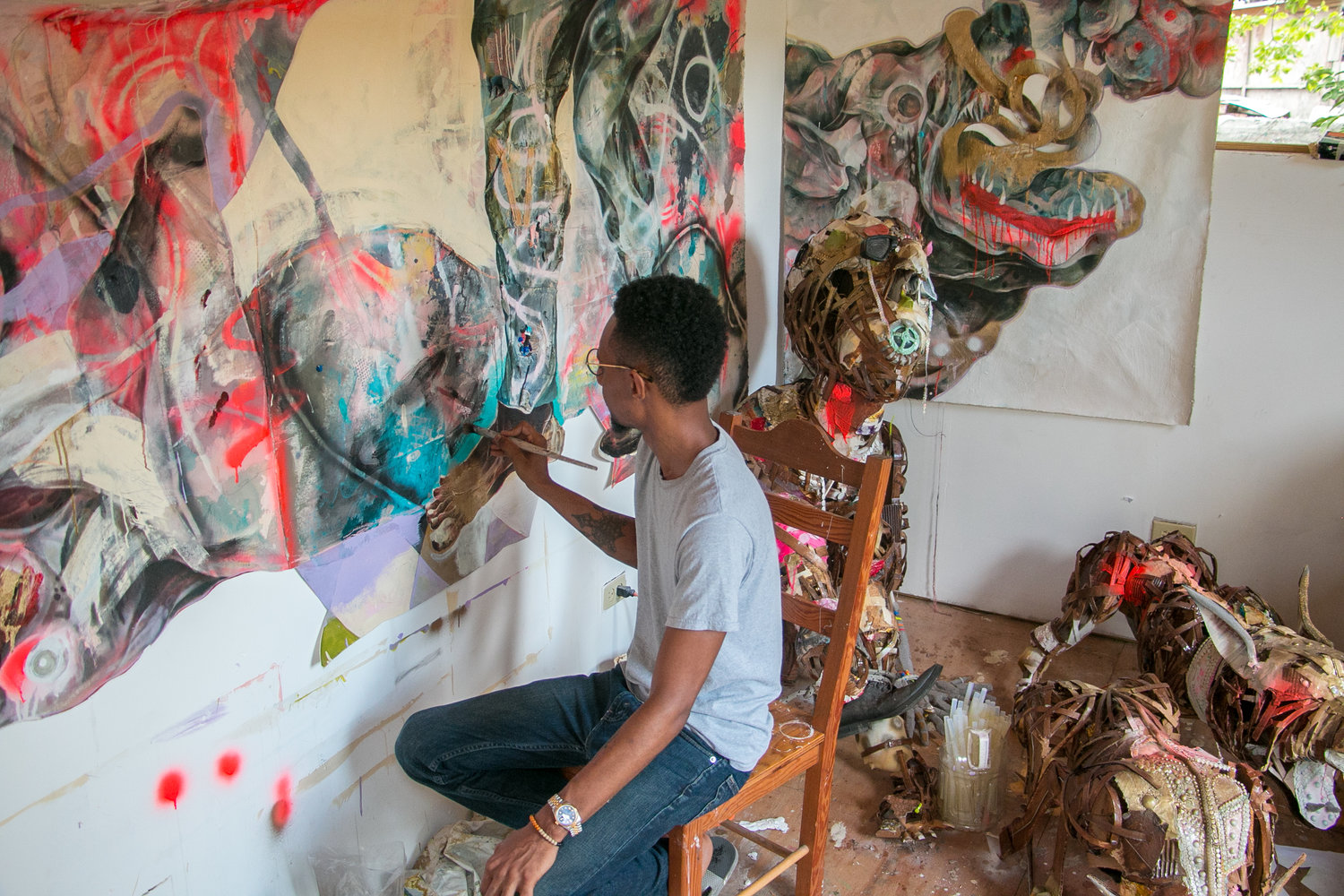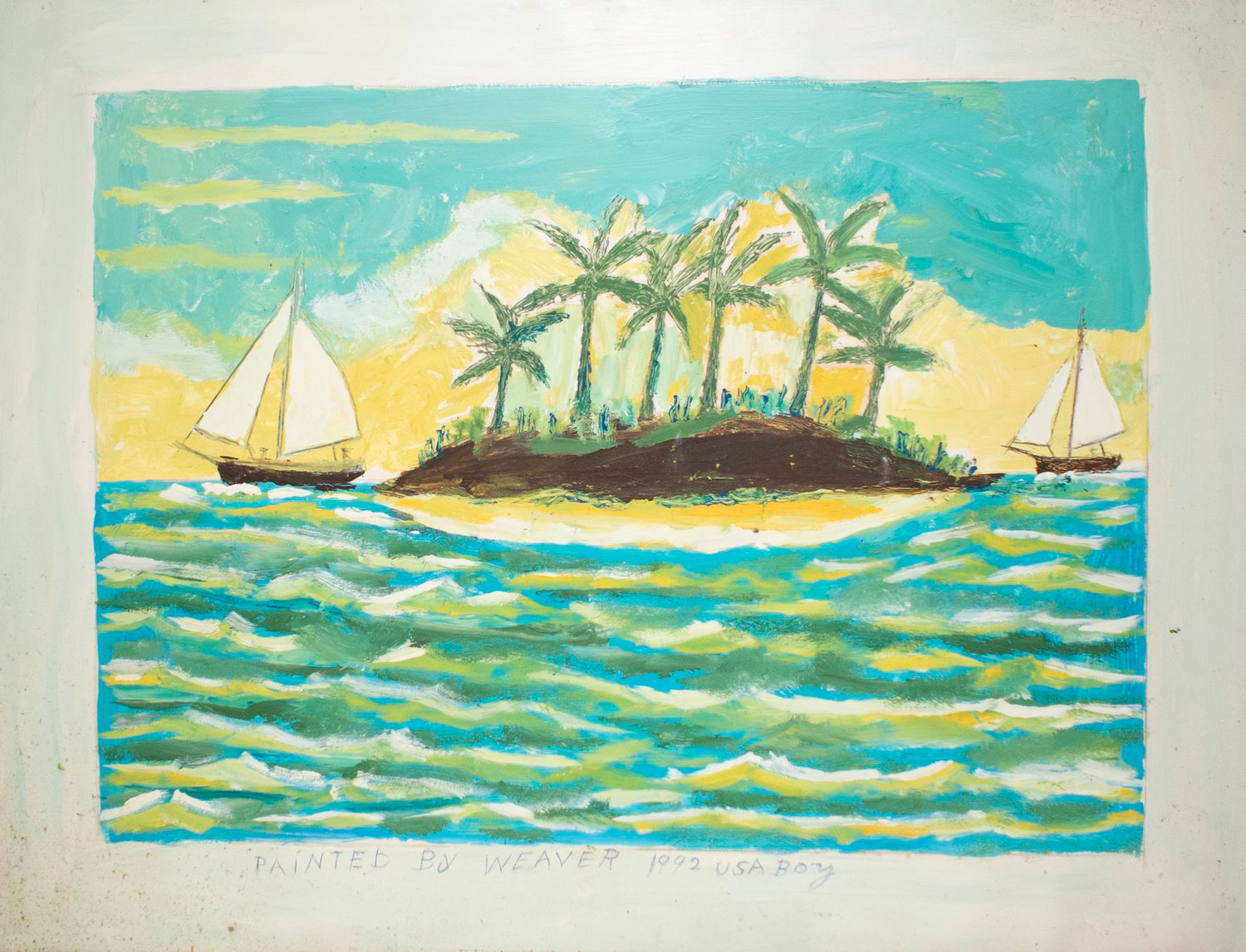All posts tagged: Keisha Oliver
Seeking Divine Creativity: Allan Wallace’s new works revisits his religious upbringing
The Clapboard House: A Disappearing Relic within The Bahamian Landscape
By Keisha Oliver. In the aftermath of Hurricane Irma’s devastation, as the Caribbean recovers and rebuilds, it would be remiss not to pause and reflect. In moving forward, there is much to be considered from our survival and journey as an island people. Our social and physical landscapes have and will continue to weave the rich cultural fabric of our existence once we continue to value and preserve them.
Studio Visit: Robin Hardy “Turning and Refining Salvaged Wood”
By Keisha Oliver. Last summer, I had the pleasure of turning my first bowl from Madeira wood with established woodturner and furniture-maker, Robin B. Hardy. With no formal training, he has developed a niche for one-of-a-kind pieces hand-crafted from a variety of wood grown in The Bahamas. Operating out of his basement workshop for the past seventeen years, Hardy’s design style is simple, functional and elegant, allowing the wood to express its own qualities and natural imperfections. His practice as a woodworker is inspired by curiosity and the challenge each piece of wood presents. He has coined his creative repertoire as “discovered art in salvaged wood.”
Studio Visit: Jessica Colebrooke “Crafting a Sustainable Future for Ceramics”
By Keisha Oliver. Five days a week, you’ll find Bahamian ceramicist Jessica Colebrooke in her Nassau studio, which is tucked away behind her home in the Gleniston Park community. 19 years ago, Colebrooke started out in a 10 x 10ft room with a sheet of plywood on two crates and a small kiln. Today she owns and manages “Jessica’s Tileworks Studio,” one of the leading ceramics and tile manufacturers in The Bahamas. As a mother, wife, educator, artist and entrepreneur, Colebrooke has committed her life and work to supporting and nurturing a culture of creativity.
Studio Visit: Lavar Munroe. Finding New Meaning to a Familiar Space
By Keisha Oliver. Interdisciplinary artist Lavar Munroe grew up in the Grants Town community of Nassau, The Bahamas, and has lived and worked in the United States for over thirteen years. Munroe’s work exists as a reflection of the environment of his upbringing and presents an ongoing critique on contemporary society and its relationships between the people of the ghetto and the ‘Others.’ He maps and celebrates his personal journey of survival and fortitude from the heart of the ‘Over-the-Hill,’ community whilst confronting broader issues concerning social stereotypes
‘Picture Nassau’: Capturing and Redefining the Cultural Landscape
Visual art and its experiences are no longer confined to classrooms, studios, or the walls of galleries. Thanks to the digital age and an increasing demand for “interactivity” the arts have considered new ways to pique the public’s interest. In The Bahamas, we have seen alternative approaches by gallerists, curators, and artists to engage audiences by creating a bridge between the traditional and contemporary through installations and public art experiences. With last year’s opening of The National Art Gallery of The Bahamas’ (NAGB) sculpture garden and the rapid growth of live art events, we exist in an exciting period of creative expression for our country.

